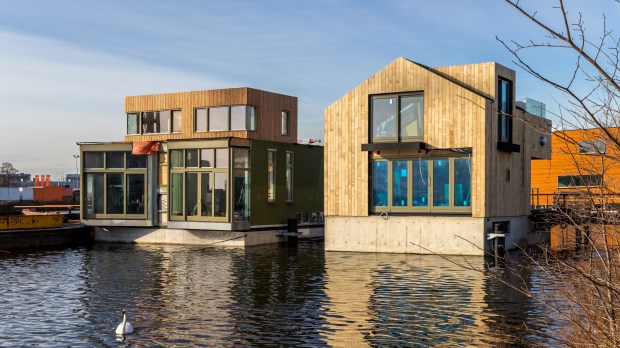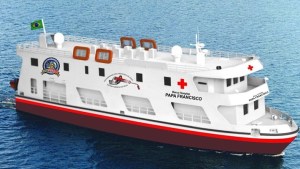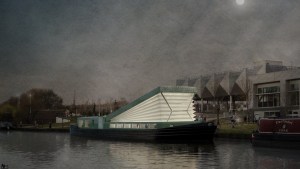Lenten Campaign 2025
This content is free of charge, as are all our articles.
Support us with a donation that is tax-deductible and enable us to continue to reach millions of readers.
Sometimes the biblical story of Noah feels a little too close to home.
We’ve got rising sea levels covering the earth with water. And let’s be honest, it doesn’t seem like “the wickedness of human beings” (Genesis 5:5) has improved much since Noah’s day.
But there’s a bit of good news: Some ingenious architects have invented a way for human beings to live on the water.
These “floating neighborhoods” are becoming increasingly popular all over the world, especially in countries with lots of coastal communities. The Netherlands is one of the nations pioneering the concept, updating zoning laws to accommodate the communities.
As sea levels rise and supercharged storms cause waters to swell, floating neighborhoods offer an experiment in flood defense that could allow coastal communities to better withstand climate change. In the land-scarce but densely populated Netherlands, demand for such homes is growing. And, as more people look to build on the water there, officials are working to update zoning laws to make the construction of floating homes easier.
These homes call to mind Noah’s Ark, which helped keep humanity alive during a time of catastrophe. We can’t help but wonder if these floating homes will play a similar role in the future.
Whether or not these homes prove lifesaving, it really is amazing to see the creativity of this invention. Such a clever solution calls to mind how human beings can participate in God’s creative power, how we are called to be co-creators with God.
Floating houses are a new kind of technology. Despite superficial similarities, they’re very different from houseboats:
A floating house can be constructed on any shoreline and is able to cope with rising seas or rain-induced floods by remaining atop the water’s surface. Unlike houseboats, which can easily be unmoored and relocated, floating homes are fixed to the shore, often resting on steel poles, and are usually connected to the local sewer system and power grid. They are structurally similar to houses built on land, but instead of a basement, they have a concrete hull that acts as a counterweight, allowing them to remain stable in the water. In the Netherlands, they are often prefabricated, square-shaped, three-story townhouses built offsite with conventional materials such as timber, steel and glass. For cities facing worsening floods and a shortage of land for housing, floating homes are one potential blueprint to expand urban housing in the age of climate change.
These floating houses might be something of a dream come true for anyone who’s ever dreamed of living in Venice. Perhaps they are a way to have a little of that old-world charm and magic in our own cities.



